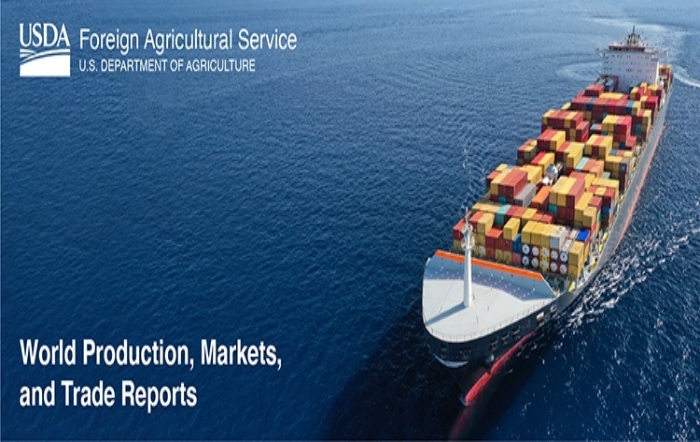
This quarterly report includes data on U.S. and global trade, production, consumption and stocks, as well as analysis of developments affecting world trade in livestock and poultry. Covers beef and veal, cattle, pork, swine, broiler meat and turkey meat
Despite the challenges of the current wave of COVID-19 infections in China, the import forecasts of
beef and pork in 2023 are revised up and are now forecast higher year-on-year. However, chicken
meat imports are forecast marginally lower.
The upward revisions for China red meat import forecasts are partially derived from higher
estimates for 2022 as fourth quarter shipments were stronger than expected. For 2023, projected
economic recovery as well as the anticipated revival of the hotel, restaurant, and institutional
(HRI) sector support expanding consumption and red meat imports. Despite an upward revision
for China pork production in 2023 from the October forecast, domestic supplies are virtually
unchanged year on year and are unlikely to fully meet rebounding consumption. Beef imports are
expected to grow in 2023, but the pace of shipments will slow as importers have product in cold
storage that needs to enter the market before they will invest in additional purchases.
China chicken meat imports are revised lower to pre-pandemic levels. Lower pork prices are
expected to lower consumer demand for chicken meat. However, chicken meat imports account
for only about 4 percent of consumption.
Beef
• Global beef production for 2023 is virtually unchanged from the October forecast at 59.2 million tons. Global beef carcass prices have eased entering 2023 — except for the United States. Nevertheless, carcass prices among major exporters are still relatively high when compared to pre-pandemic levels, suggesting limited supplies and firm demand from key markets.
• Global beef exports for 2023 are virtually unchanged from the October forecast at 12.2 million
tons. China imports are raised given the lifting of COVID-19 restrictions which will strengthen HRI
demand. Australia and Brazil are expected to gain market share due to lower exportable supplies
in the United States, Uruguay, and Argentina. U.S. imports are also raised as lower U.S beef
production supports additional imports from Brazil and Australia.
Pork
• Global pork production for 2023 is revised up 3 percent from the October forecast to 114.1 million
tons on higher output in China. Pork demand is expected to strengthen in China due to recently
lifted COVID-19 restrictions. Production forecasts remain largely unchanged for other countries.
• Global pork exports for 2023 are forecast 2 percent higher from the October forecast to 10.7
million tons as EU, Brazil, and U.S. exports are up on stronger than anticipated demand from key
Asia markets. Upward revisions in China and Philippines imports will more than offset a decline in
the United States. Philippines imports are forecast higher as reduced import tariffs for pork are
extended through 2023. African swine fever continues to stifle Philippines production, boosting
demand for imports.
Chicken Meat
• Global chicken meat production for 2023 is virtually unchanged from the October forecast at 102.9
million tons as upward revisions for United Kingdom, Thailand, and Mexico offset a decrease for
Brazil. United Kingdom production continues its expansion on strong demand despite labor issues,
higher input costs, and recent outbreaks of highly pathogenic avian influenza (HPAI). Lower
production costs for feed and genetics will spur Thailand production. Brazil is revised lower on
weaker foreign demand, particularly from China.
• Global chicken meat exports for 2023 are revised 1 percent lower from the October forecast to
14.0 million tons. Weaker China, EU, South Africa, and UK demand will primarily impact Brazil, the
world’s leading exporter. While Brazil shipments are forecast lower compared to the October
forecast, volumes are still expected to reach a historical level. Competitive pricing, the absence of
HPAI, and diverse product offerings will enable Brazil’s reduction in shipments to China to be
largely offset by other markets.
Assumptions
Diseases: Forecast reflects animal disease policies/restrictions in place as of January 12, 2023 and
assumes their continuation.
Trade Actions: This report only considers those trade actions which are in place or have had formal
announcement of effective dates as of the time of publication. Further, unless a formal end date is
specified, this report also assumes such actions are in place throughout the time period covered by these
forecasts.
Technical Notes: CWE/PWE: All quantities (beef and pork) noted are in Carcass Weight Equivalent (CWE) unless otherwisenoted as Product Weight Equivalent (PWE). CWE is the weight of an animal after slaughter and removal
of most internal organs, head, and skin. PWE is the actual weight of the meat product exported.
RTC (Ready-to-Cook): RTC means any slaughtered poultry free from protruding pinfeathers and vestigial
feathers (hair or down), from which the head, feet, crop, oil gland, trachea, esophagus, entrails, and
lungs have been removed, and from which the mature reproductive organs and kidneys may have been
removed, and with or without the giblets, and which is suitable for cooking without need of further
processing Ready-to-cook poultry also means any cut-up or disjointed portion of poultry or other parts
of poultry, such as reproductive organs, head, or feet that are suitable for cooking without need of
further processing.
European Union: The term “European Union” means the countries involved in the previous customs
union, i.e., EU27+UK, through 2015. Starting with 2016 data, livestock and poultry PSDs reflect EU27 and
UK separately.
- Current Report
- Past Reports (USDA Economics, Statistics and Market Information System)
